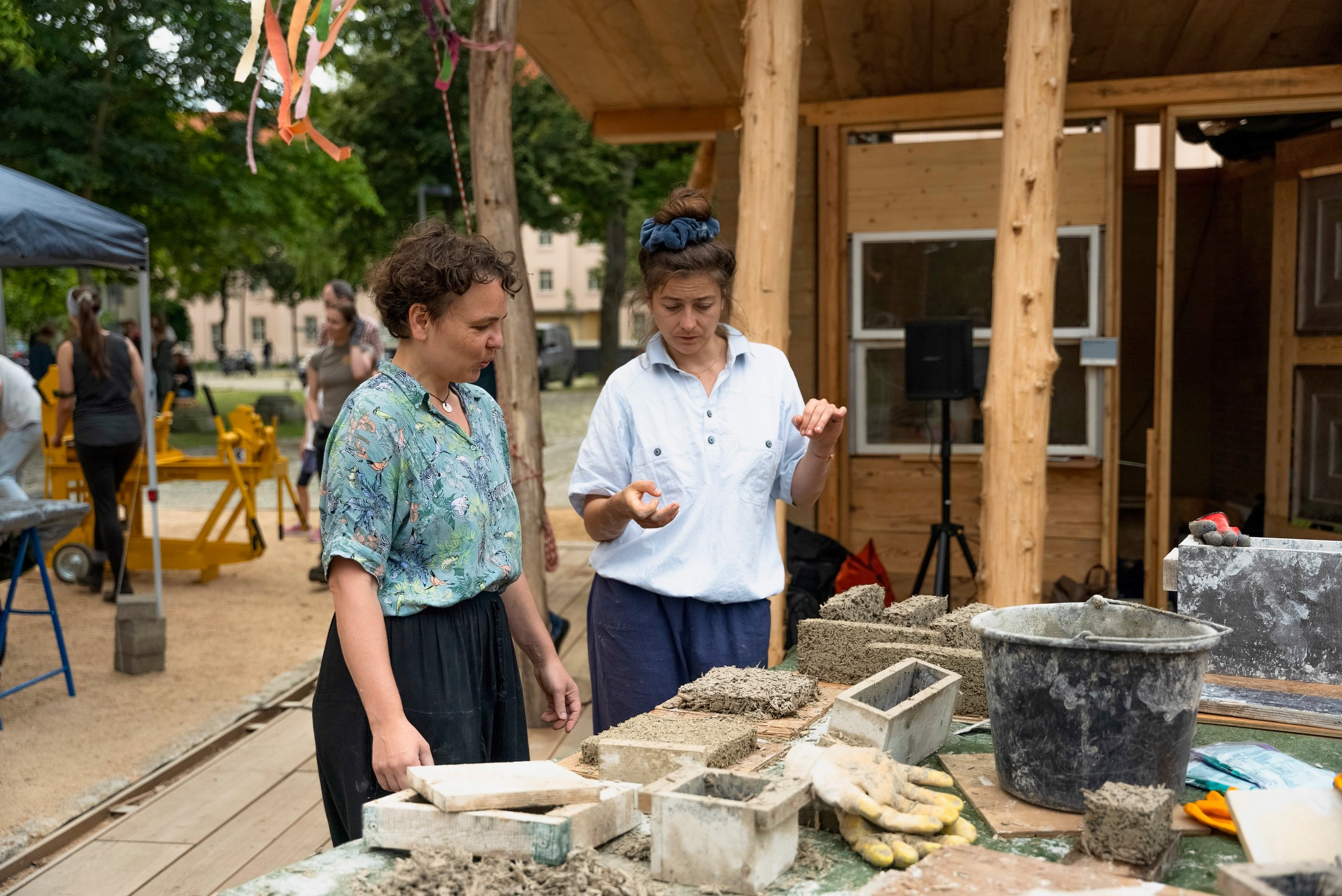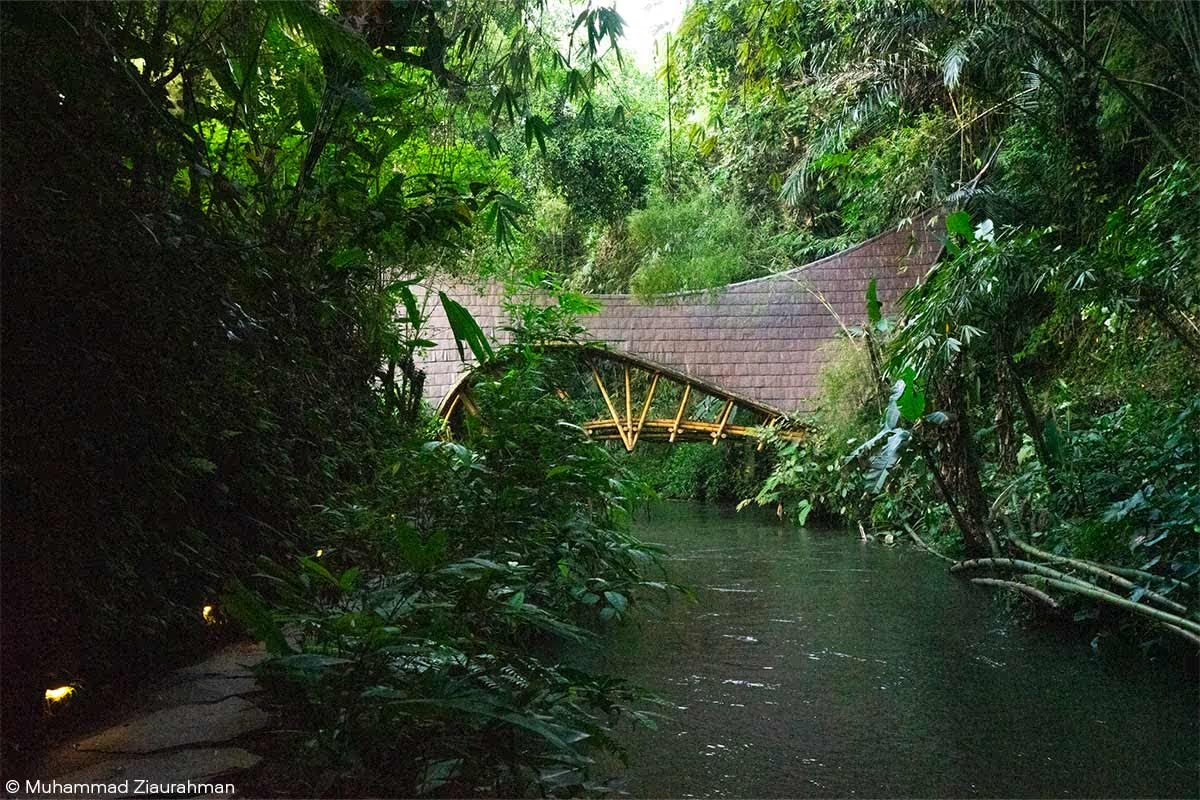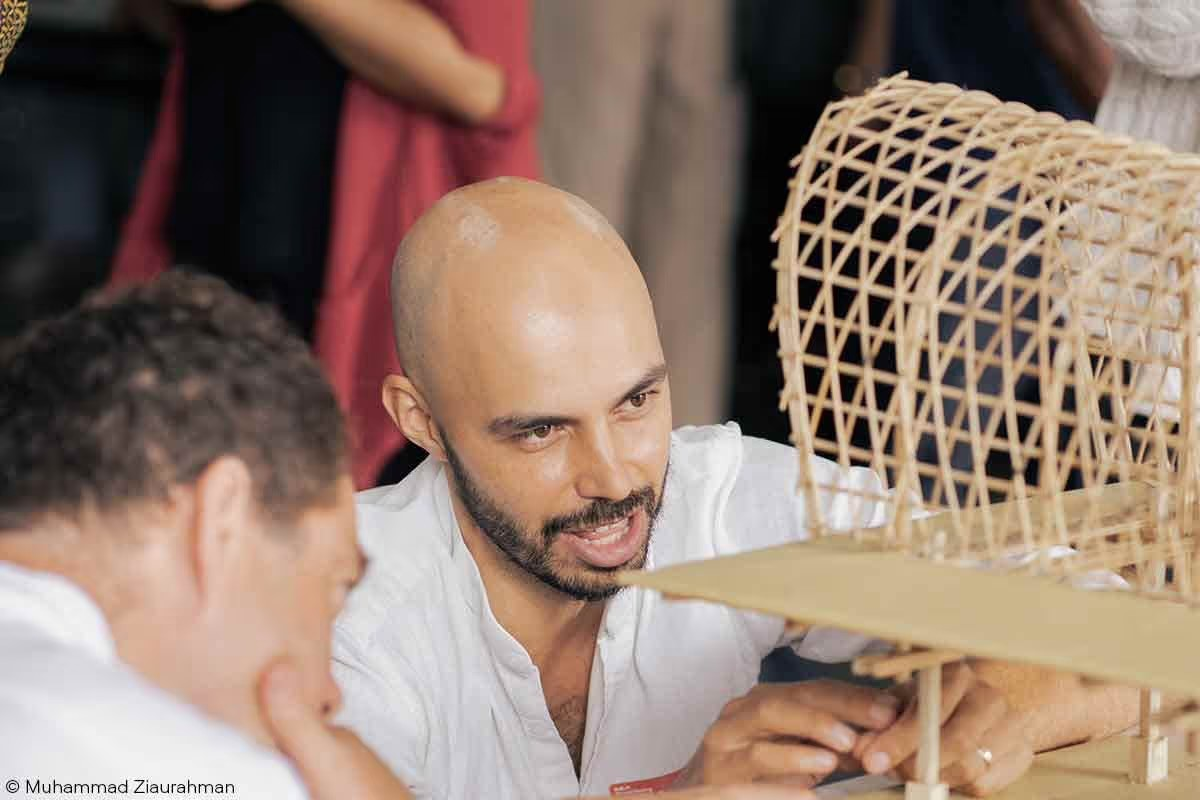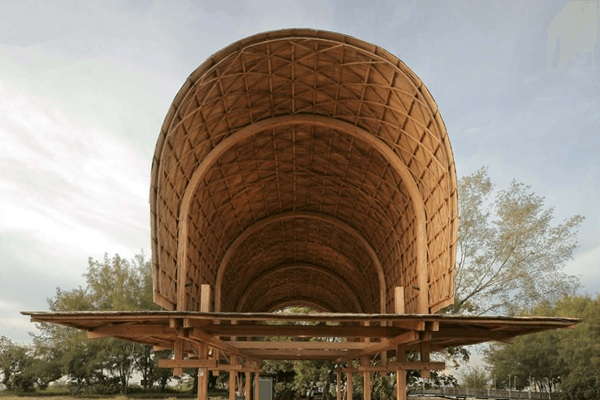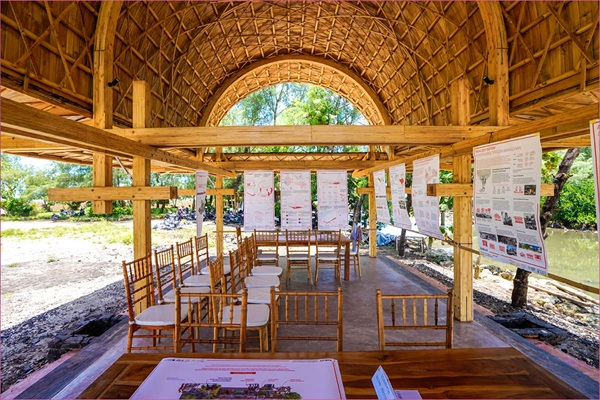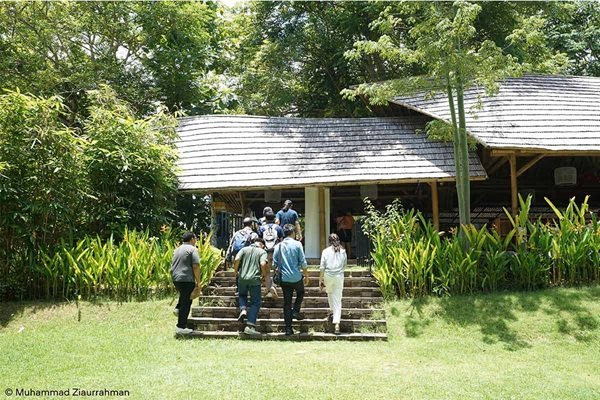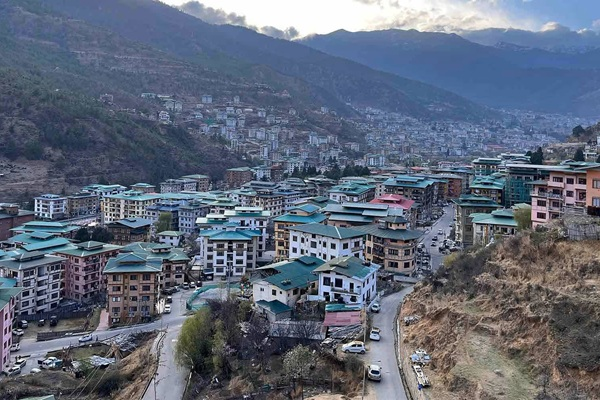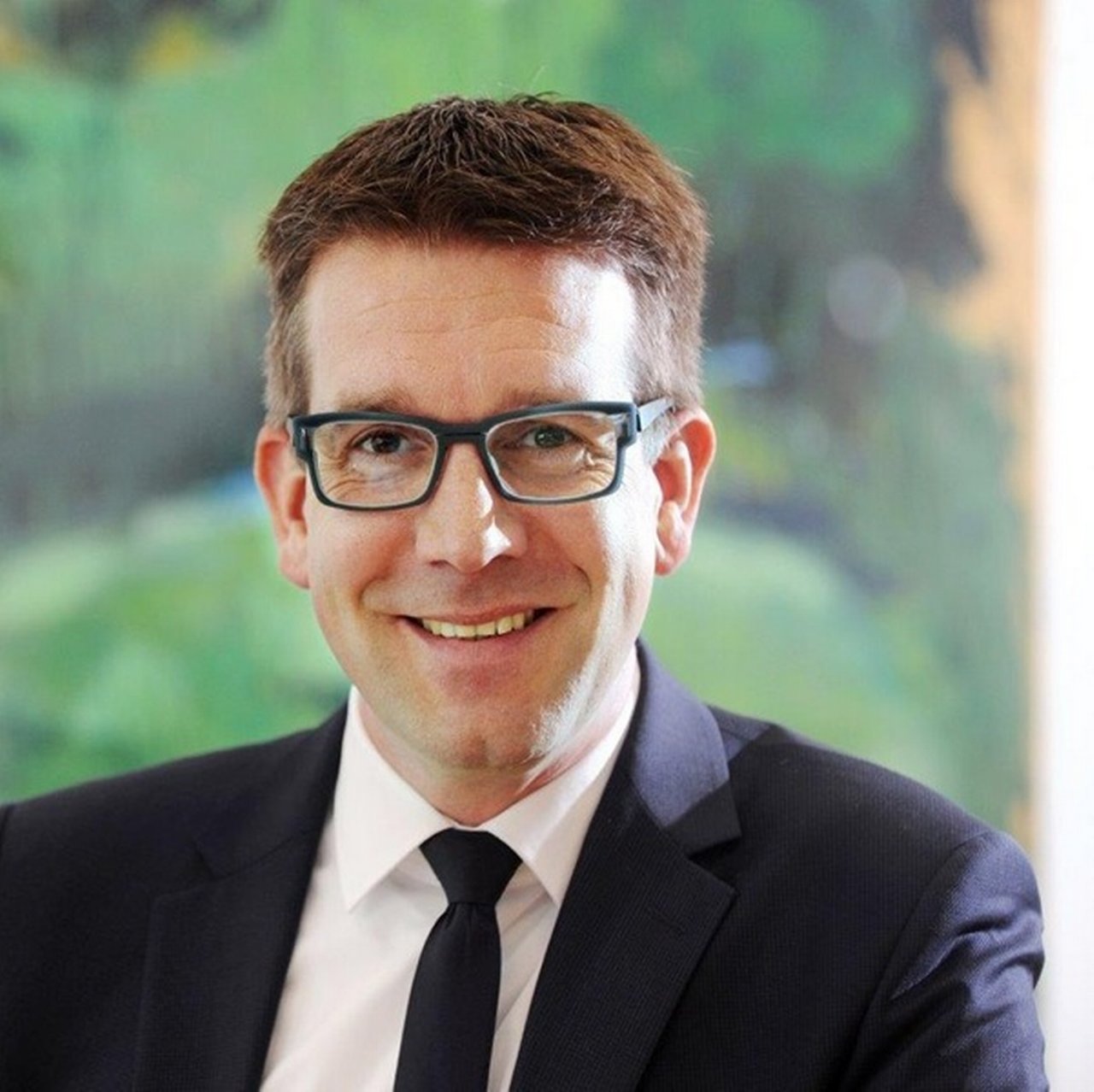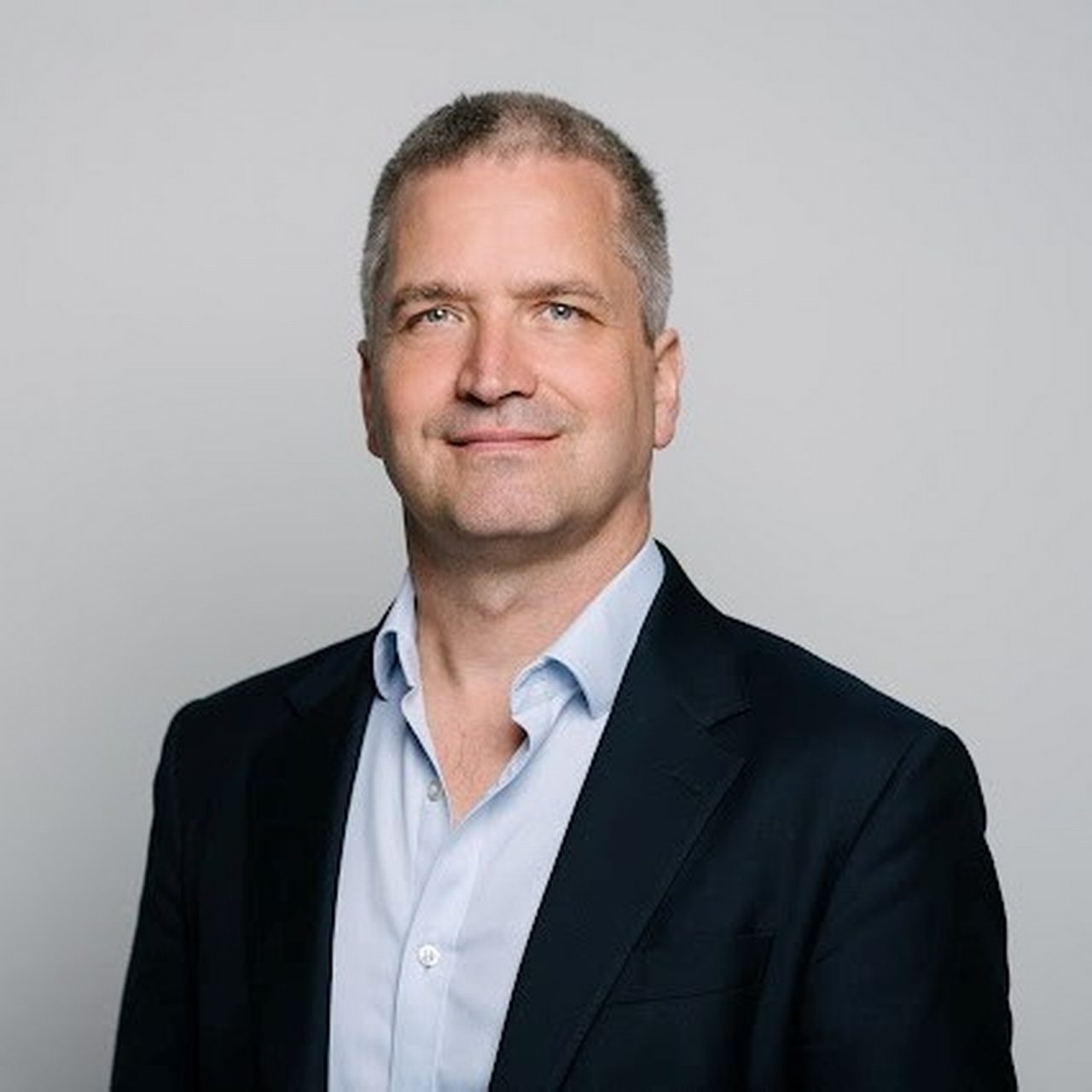
“The elephant in the climate room”
Philipp Misselwitz has a bold vision: the construction sector should help protect the planet in the future instead of harming it. In our interview, the head of the organisation 'Bauhaus Earth' reveals how.
When Philipp Misselwitz talks about the future of construction, he's virtually unstoppable. "I'm a desperate optimist," says the head of the "Bauhaus Earth" organisation, which researches how sustainable construction can protect the environment instead of damaging it. In an interview with What Next, the professor at the Technical University of Berlin discusses why the number of buildings worldwide will double, why so many myths about wood and other materials persist so stubbornly and why using cutting-edge technology has to take into account the overall ecological balance.
Philipp Misselwitz, your organisation "Bauhaus Earth" calls the construction sector "the elephant in the climate room". Why?
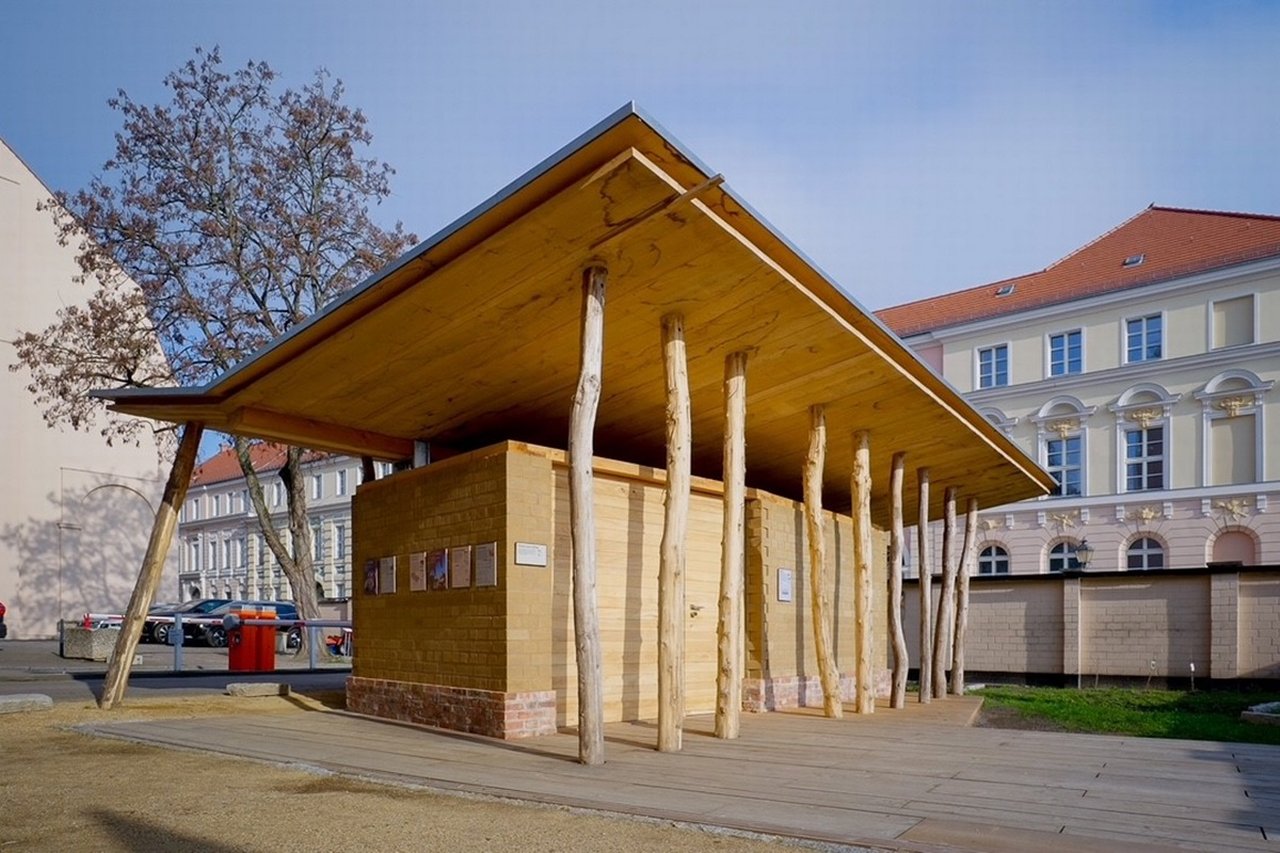
Pavillion in Potsdam
Construction is the largest emitter of greenhouse gases. It is responsible for around 40 percent of all CO₂emissions and consumes 90 percent of mineral resources such as iron, gravel and sand. But that's not all: we are facing the largest wave of urbanisation ever; in the next 20 years, 2 to 3 billion people worldwide will move to cities. At Bauhaus Earth, we expect the number of buildings worldwide to double – and corresponding levels of material consumption. Basically, what we’re dealing with here is undoubtedly the metaphoric " elephant in the climate room".
The construction sector could become a healing force for nature.
Conversely, this also means that there is a great deal of potential when it comes to climate action. In an ideal world, what would be possible?
The vision Bauhaus Earth has is that the construction sector should not only do less harm; it could even become a healing force for nature.
How is that supposed to work?
Above all, we must understand construction holistically, across its entire life cycle: from the cultivation and extraction of building materials to the act of building itself, to how we can flexibly use buildings over time, and the question of what happens if something eventually has to be demolished. If we succeed in this, we will have enough levers to pull.
Which are the most important?
We need a materials transition. Until now, mineral and fossil materials like steel and cement have dominated. It won't be possible to do without them entirely in the future, but there are many bio- and geo-based alternatives – from wood to clay and earth, to fungi or agricultural waste products like straw. These are abundant in nature – and in many cases, they can regrow. This can cover a large part of future demand.
But isn't building with these materials significantly more expensive than with concrete?
Current prices are distorted because the negative effects of using concrete are not factored in. We need a level playing field, where all cost factors are considered. We are far from that. However, the choice of building materials alone is not enough for the construction industry to drive a real turnaround in the fight against climate change.
We can reach a point where the construction industry can counter climate change, protecting the planet instead of damaging it.
So what else do we need?
We need to use materials more efficiently and less wastefully, and here too, this applies along the entire value chain, from the very beginning. A forest, for example, is a complex ecosystem, and only those who truly understand it can plant trees in a way that benefits the planet, encourages biodiversity and prevents forest fires. Material usage can also be optimised during construction itself. And last but not least, when it comes to converting or deconstructing buildings. This is a major topic in Germany and Europe, and the economy is only just starting to adapt to it. There is now a whole array of start-ups that are working intensively on how to build a circular economy in the construction sector.
Myths and prejudices persist very stubbornly. For example, many still believe that wood poses a high fire risk.
In a best-case scenario, cities will become carbon sinks because – instead of emitting it in industrial processes – we will store CO₂ in durable, nature-based building products. At the same time, we will reforest new areas that, in turn, remove CO₂from the atmosphere. If everything aligns, we can reach a point where the construction industry can actually counter climate change, protecting the planet instead of damaging it.
How important is the use of cutting-edge technology in this regard?
It can help at all stages of the value chain. AI can help to better understand the complexity of nature, develop waste-free building products, use them optimally and ultimately protect the planet. However, we must always keep the overall ecological balance in mind: if today's state-of-the-art building technology reduces heating and cooling costs but consumes a lot of energy during its production and perhaps becomes obsolete and needs to be replaced after only a few years, then nothing would be gained in terms of tackling climate change.
How do you assess the awareness in Germany for the need to build sustainably in order to win the fight against climate breakdown?
Things are moving, but not fast enough and not broadly enough. There are pioneers in all areas, among developers and investors as well as among construction companies and material suppliers. We need to communicate these examples better and make them so well known that they become driving forces. Scalability is still lacking.
The situation is incredibly serious. But we must not allow ourselves to be paralysed or become numb to it.
What are the biggest hurdles preventing faster progress?
In the 20th century, buildings made of steel, glass and concrete became a symbol of modernity and prosperity for many people. A certain social perception of materials emerged: those who are poor build with what is readily available, such as wood and clay; those who can afford it build with concrete – even if these buildings often bring new disadvantages like mould.
A question of beliefs, then?
Indeed, myths and prejudices persist very stubbornly. For example, many still believe that wood poses a high fire risk. However, it has long been scientifically proven that wooden buildings are easier for firefighters to extinguish than steel ones, because steel bends after only a short time. So we need to educate more in this area.
What else needs to be done?
We need more research in the field of sustainable construction. As long as concrete and steel are the predominant materials for companies, they will invest most in them. That’s why foundations and government funding programmes are also needed. At Bauhaus Earth, for example, we have explored how construction excavation waste, previously a costly disposal problem, can be pressed into load-bearing earth-clay bricks that have an excellent ecological balance without cement additives and are air-dried. This approach immediately proved scalable and is already in high demand.
How do you assess the political will to advance sustainable construction?
Currently, the discussion has shifted back to building quickly and simply to address housing shortages in large cities. However, an important step now would be to use the funding from the Infrastructure and Climate Transformation Funds to help regenerative construction methods to a breakthrough – and not artificially keep outdated methods alive. We must take bold action. Now. Because later, it will be much more expensive.
So far, we have mainly talked about Germany. What about sustainable construction abroad?
Awareness of the need to tackle climate change is most developed in the old, industrialised countries, which is not surprising. Many poorer countries, for example, in the Sub-Saharan zone, consume much less CO₂ per capita than we do and feel less responsible for fighting the consequences.
We can best change this by conveying the economic benefits that sustainable construction brings. This can be achieved, for example, by using local building materials such as clay, palm leaves, coconut shells or straw, instead of importing expensive reinforced concrete. In other words: we must turn the climate narrative into a development narrative. Time is short since the majority of the expected billion-strong influx into cities will take place in these regions.
Are there already encouraging examples?
Yes, everywhere – from Bhutan to projects in Burkina Faso and Rwanda. Or take Indonesia: in Bali, intensive work is currently underway to use bamboo, which we would usually associate with basic beach bars, for highly complex construction projects. Bamboo is superior to wood in many respects: it grows faster, stores more carbon, and can be processed easily on an industrial scale.
Can high-rises or apartment blocks, which will be necessary for the rapidly growing population in the cities of the Global South, actually be built from bamboo or clay?
Presuming one understands and uses the material correctly: yes, absolutely. Every material has special qualities, as well as weaknesses. Therefore, there will certainly also be hybrid construction methods involving concrete. And, of course, buildings made of clay or wood will look different and have different forms than those made of concrete; there will be a new aesthetic in architecture.
You have described both positive and concerning aspects. In a nutshell: what is your current feeling when you think about sustainable construction?
The situation is incredibly serious. But we must not allow ourselves to be paralysed or become numb to it. I am a desperate optimist.
This page was published in October 2025.

About Philipp Misselwitz
Professor Philipp Misselwitz is the CEO of the organisation “Bauhaus Earth.” He studied architecture and urban planning at the University of Cambridge and the Architectural Association School of Architecture in London. Since 2013, he has headed the department “International Urbanism and Design – Habitat Unit” at TU Berlin. Bauhaus Earth is an interdisciplinary, internationally oriented ‘think-and-make tank’ that has been dedicated to transformation through sustainable construction since 2019.

Claudio De Luca
… is head of the Editing team at Deutsche Bank and ensures the quality of written content. He enjoyed stepping back into his former role as a journalist for the interview — and was surprised by the potential role sustainable construction could play in climate protection in the future.
Recommended content
Responsible Growth | Expert View
How does sustainable building work? Sustainable building: It’s all about the right order
Housing crisis and climate change: The building sector drives CO₂ – refurbishment is key to making sustainable building a reality. Alf Meyer zur Heyde knows how.
How does sustainable building work? How does sustainable building work?Responsible Growth | Outlook
Saving energy with networks Saving energy with networks
Smart buildings, connected infrastructure and intelligent data: Rainer Haueis from Siemens Smart Infrastructure explains how digital technology is turning buildings into autonomous actors.
Saving energy with networks Becoming more efficient – togetherResponsible Growth | Video Story
Sustainable student living Sustainable student living
Project Development company UPP is building sustainable student accommodations across the UK, limiting carbon production in the building lifecycle.
Sustainable student living Come in

